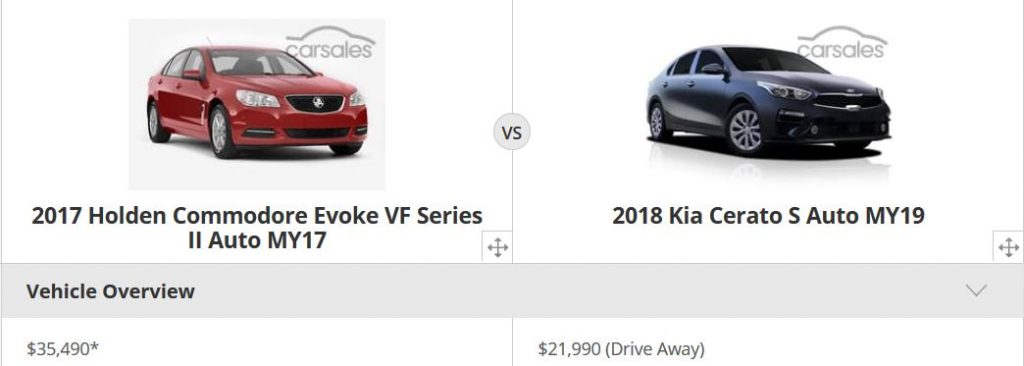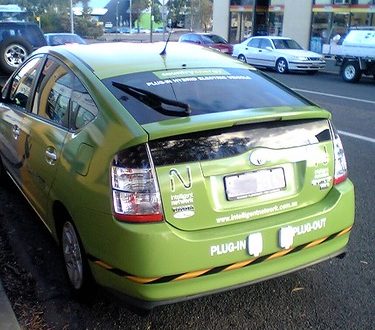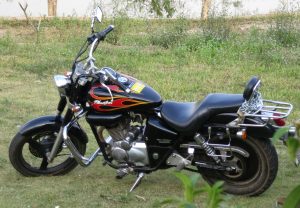If you can’t go car free, you can at least save thousands of dollars by reducing your car costs.
The average Australian household that adopts these measures for a two car household could save $3000 a year while the same household that manages with one car using these measures plus some of the measures of a carfree household can save $8000 a year.
Small is the new big
- Small cars used to be the domain of first time drivers, singles, couples without children and the elderly, but like other car classes they have grown in size too.
- Today’s “small cars” have similar interior dimensions and boot space to the last Australian made Holden and Ford family sized cars that were built just a few years ago.
- A small car can comfortably transport 4 adults or 2 adults and 3 children using 30-50% less fuel. If you need a little more luggage space, some small cars come with a wagon option.
- An entry level small car costs just over $20,000, the price of an early 1990s large car, but with far better fuel economy, features, safety features, handling and similar straight line performance.
- Small cars can tow up to 1200kg with the right towing kit. If you need to ocassionally tow something heavier, it might be worth just hiring a vehicle when you need it.
- Sticking with the same sized car (rather than the same car class) when you upgrade is a great way to save money. Same goes for small car buyers: save by getting a “micro” car as they are today’s small cars.

Small cars and safety:
- The size of your vehicle is just one factor in how safe you are. Other factors include how often you drive, your driving behaviour if your speed is suitable for the circumstances and how well you and your car can avoid an accident in the first place.
- Small cars are far better at avoiding accidents than larger cars as they handle better, have better driver visibility, are less prone to rollovers and present a smaller target to avoid hitting in a dangerous situation.
- Only poorly built small cars represent a greater crash risk to their occupants, as is the case with poorly built large cars. Crash ratings indicate how a vehicle performs in a crash, not how many crashes it is likely to be involved in [1][2].
- Small cars do lower the overall risk for all road users. A 450kg increase in average vehicle weight since 1989 in the US corresponded with a 47% increase in fatalities for all road users [3][4][5].
Are Small cars disposable?
- The size of a car does not determine how long it will last or how reliable it will be. That comes down to design and manufacturing quality.
- Small Japanese cars in the 1970s that weighed half to a third of the large American cars at the time easily got double the mileage [6][7]. It’s not uncommon to see small cars from the 1970s onwards that have even clocked up 400,000-500,000 kilometres.
- To find a good car, use the online Dog and Lemon Guide; they don’t receive any car advertising revenue so they are extremely honest about vehicle quality, reliability and safety. Once you’ve narrowed down your options, you can pay $10 for comprehensive reviews on three different car models.
Should I go for a diesel, petrol, hybrid or electric car?

“Prius Plug-in Plug-out hybrid Car in Canberra” by tomw99au is licensed under CC BY-SA 2.0 This section is an excerpt of the original.
- Keep this in mind: No car is a green option, some are just a bit less worse than others.
- Diesels are more suited to commercial buyers and can be a nightmare for private buyers if anything goes wrong and turbo petrol cars are also best avoided for the same reason.
- Hybrid and electric cars can still be a bit pricy and might only be worth considering if the price is right (or you’re happy to pay more) and you can recharge them from a cheap source of energy (rooftop solar or a power point at work).
- Best to go for a small non turbo petrol model that is well reputed. Any small car can achieve reasonable fuel economy without resorting to expensive and complicated technical wizardry.
- If you know how to drive a manual well and don’t mind doing it, a manual gearbox is a great option for durability. Whatever car you buy, keep it well maintained.
Recover money by lending out your car
- We haven’t included these savings in the smart renter transport costs but peer to peer car sharing networks offer a way to lend your car to others and recover some ownership costs when you’re not using it.
- Companies like Car Next Door and Drive My Car allow you to set the dates and hours that your car is available for hire.
- Only screened members can book your car while these companies provide full comprehensive insurance for the car whilst it is being borrowed.
- Data is hard to come by for Australia but in the US a small car can make its owner $3400 a year for 10 hours a week of rental [8].
A motorbike as an alternative

- A mid to large motorbike can cost as much as a car, use as much fuel, has similar insurance, registration and maintenance costs and you need to buy good protective gear for you and your passenger.
- Motorbikes can only transport up to two people with very little luggage, they offer no weather protection and you are thirty times more likely to be killed on the road than in a car [9].
- If you already ride for enjoyment, this probably won’t change your mind but for car drivers looking for a cheap way out, look elsewhere.
The take home message
If you’ve already got a car, you might not trade it in straight away but when you do, the smartest option is to go for a micro to small car if you can’t go car free. Go for tried and tested technology (e.g. avoid diesels and turbo charged engines).
Further Reading:
[1] https://www.thrillist.com/cars/nation/why-car-safety-ratings-crash-test-results-are-wrong [2] http://www.ptua.org.au/myths1/smallcar.shtml [3] http://freakonomics.com/2011/07/29/killer-cars-an-extra-1000-pounds-increases-crash-fatalities-by-47/ [4] http://www.thecarcrashdetective.com/2014/04/driving-in-us-more-dangerous-than-europe.html/ [5] This trend is now playing out in Australia:https://theconversation.com/ive-always-wondered-are-suvs-and-4wds-safer-than-other-cars-98559
[6] http://www.nytimes.com/2012/03/18/automobiles/as-cars-are-kept-longer-200000-is-new-100000.html?_r=2&ref=business&pagewanted=all& [7] http://sloanreview.mit.edu/article/manufacturing-innovation-lessons-from-the-japanese-auto-industry/ [8] https://gigaom.com/report/the-economics-of-peer-to-peer-car-sharing/ [9] https://theconversation.com/cycle-walk-drive-or-train-weighing-up-the-healthiest-and-safest-ways-to-get-around-the-city-100238